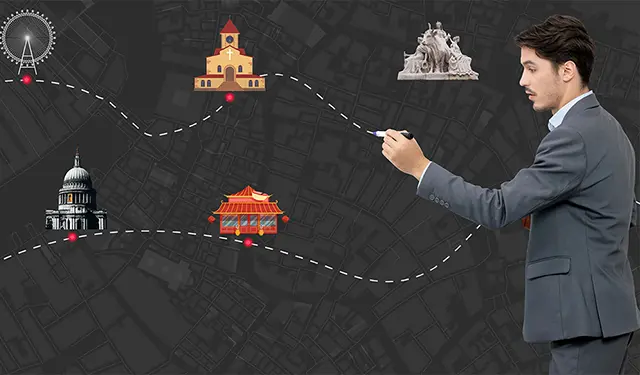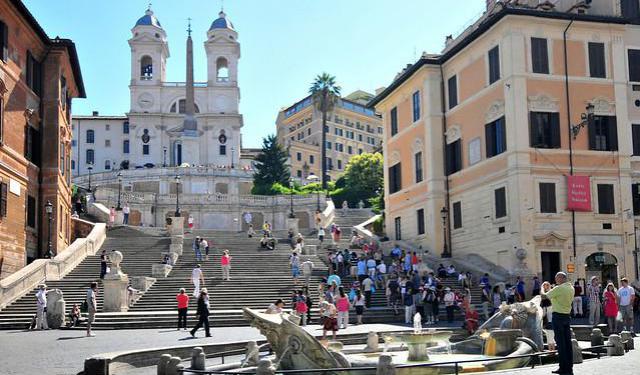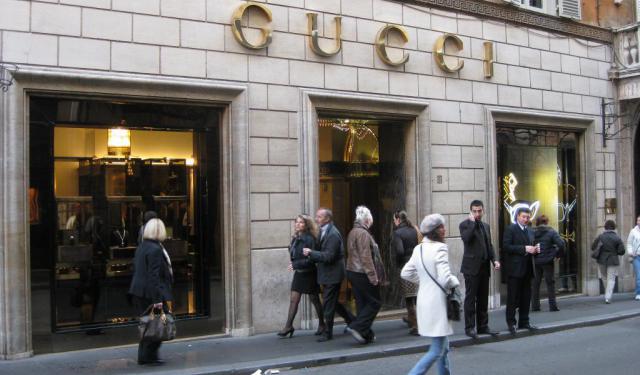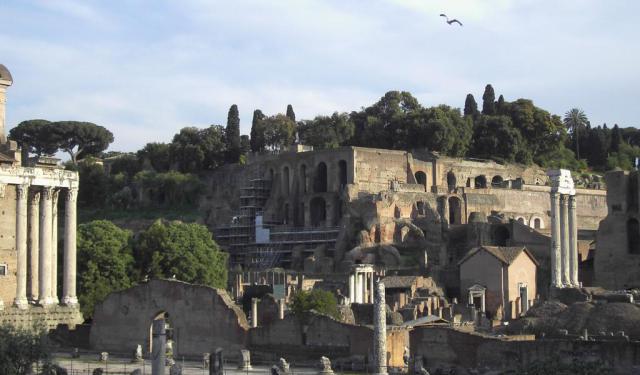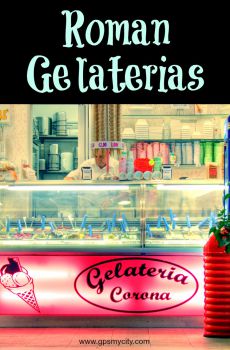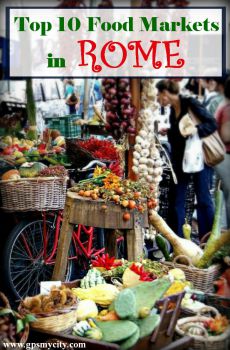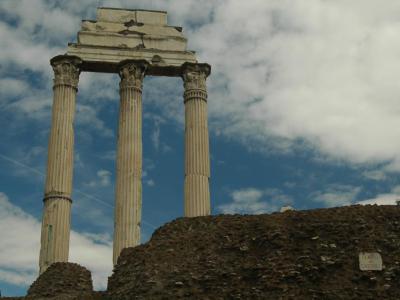
Tempio dei Dioscuri (Temple of Castor and Pollux), Rome
The Temple of Castor and Pollux in the Roman Forum was dedicated to the Dioscuri, twin sons of the god Jupiter (also known as Zeus) and the mortal woman Leda. The brothers were known for their horsemanship, military skill, and loyalty.
The cult of Castor and Pollux was introduced to Rome from Greece, and their temple was originally constructed to commemorate the Roman victory at the Battle of Lake Regillus in 495 BC. According to legend, the twins miraculously appeared on the battlefield, fighting for the Romans. After the battle, they were seen watering their horses at the Spring of Juturna in the Forum, thus marking the spot where their temple was built later. The temple was officially dedicated on July 15, 484 BC.
The Dioscuri symbolized Roman virtues such as courage, loyalty, and strength, making them ideal patrons for the Roman knights (called “equites”). Their blond, curly hair and white horses further contributed to their association with youthful vigor and military prowess.
Throughout the Republican period, the temple served various civic functions, including as a meeting place for the Senate and a speaker’s platform. Later, under the Imperial period, it became a center for official government functions, the State treasury, and weights and measures regulation. Evidence even suggests that one of its chambers may have been used by a dentist.
Over time, the temple underwent several reconstructions. The first major renovation occurred in 117 BC after a military victory over the Dalmatians. After being destroyed by fire in 14 BC, it was rebuilt by Tiberius, the adopted son of Emperor Augustus, and was rededicated in 6 AD. This version, featuring Corinthian columns and a large podium, is the one whose remains are visible today. During the Imperial era, Castor and Pollux were closely associated with the imperial family, particularly with Gaius and Lucius Caesar, as well as Tiberius and Drusus.
By the 4th century AD, the temple was likely falling into disrepair as Christianity replaced pagan worship. By the 15th century, only three Corinthian columns remained standing, leading to the nearby street being nicknamed "The Road of Three Pillars." In 1760, preservation efforts were made to prevent their collapse.
Today, the three towering columns and remains of the podium make the Temple of Castor and Pollux one of the most recognizable ruins in the Roman Forum. Though the temple itself is mostly gone, statues of the Dioscuri still stand in Campidoglio Square, guarding the steps leading up to Capitoline Hill.
The cult of Castor and Pollux was introduced to Rome from Greece, and their temple was originally constructed to commemorate the Roman victory at the Battle of Lake Regillus in 495 BC. According to legend, the twins miraculously appeared on the battlefield, fighting for the Romans. After the battle, they were seen watering their horses at the Spring of Juturna in the Forum, thus marking the spot where their temple was built later. The temple was officially dedicated on July 15, 484 BC.
The Dioscuri symbolized Roman virtues such as courage, loyalty, and strength, making them ideal patrons for the Roman knights (called “equites”). Their blond, curly hair and white horses further contributed to their association with youthful vigor and military prowess.
Throughout the Republican period, the temple served various civic functions, including as a meeting place for the Senate and a speaker’s platform. Later, under the Imperial period, it became a center for official government functions, the State treasury, and weights and measures regulation. Evidence even suggests that one of its chambers may have been used by a dentist.
Over time, the temple underwent several reconstructions. The first major renovation occurred in 117 BC after a military victory over the Dalmatians. After being destroyed by fire in 14 BC, it was rebuilt by Tiberius, the adopted son of Emperor Augustus, and was rededicated in 6 AD. This version, featuring Corinthian columns and a large podium, is the one whose remains are visible today. During the Imperial era, Castor and Pollux were closely associated with the imperial family, particularly with Gaius and Lucius Caesar, as well as Tiberius and Drusus.
By the 4th century AD, the temple was likely falling into disrepair as Christianity replaced pagan worship. By the 15th century, only three Corinthian columns remained standing, leading to the nearby street being nicknamed "The Road of Three Pillars." In 1760, preservation efforts were made to prevent their collapse.
Today, the three towering columns and remains of the podium make the Temple of Castor and Pollux one of the most recognizable ruins in the Roman Forum. Though the temple itself is mostly gone, statues of the Dioscuri still stand in Campidoglio Square, guarding the steps leading up to Capitoline Hill.
Want to visit this sight? Check out these Self-Guided Walking Tours in Rome. Alternatively, you can download the mobile app "GPSmyCity: Walks in 1K+ Cities" from Apple App Store or Google Play Store. The app turns your mobile device to a personal tour guide and it works offline, so no data plan is needed when traveling abroad.
Tempio dei Dioscuri (Temple of Castor and Pollux) on Map
Sight Name: Tempio dei Dioscuri (Temple of Castor and Pollux)
Sight Location: Rome, Italy (See walking tours in Rome)
Sight Type: Attraction/Landmark
Guide(s) Containing This Sight:
Sight Location: Rome, Italy (See walking tours in Rome)
Sight Type: Attraction/Landmark
Guide(s) Containing This Sight:
Walking Tours in Rome, Italy
Create Your Own Walk in Rome
Creating your own self-guided walk in Rome is easy and fun. Choose the city attractions that you want to see and a walk route map will be created just for you. You can even set your hotel as the start point of the walk.
Spanish Steps to Trevi Fountain
An established tourist mecca, today's Rome is hardly imaginable without two of its much loved attractions – the Spanish Steps and the Trevi Fountain. Magnets for tourists as they are, these two sights are connected to a number of other, not less worthy of attention locations, such as the Fountain of the Longboat or Piazza Colonna and its centerpiece, the Column of Marcus Aurelius, to... view more
Tour Duration: 1 Hour(s)
Travel Distance: 2.0 Km or 1.2 Miles
Tour Duration: 1 Hour(s)
Travel Distance: 2.0 Km or 1.2 Miles
Rome Introduction Walking Tour II
Rome, the Eternal City, carries a legacy shaped by centuries of resilience, transformation, and cultural flourishing. The fall of the Roman Empire in 476 AD marked the end of an era, plunging Western Europe into the dark Middle Ages. Yet, even amid the disarray, Rome endured as a beacon of unity, largely due to its status as the center of Catholicism. The papacy wielded spiritual influence,... view more
Tour Duration: 2 Hour(s)
Travel Distance: 3.4 Km or 2.1 Miles
Tour Duration: 2 Hour(s)
Travel Distance: 3.4 Km or 2.1 Miles
Vatican Walking Tour
Consisting of a walled enclave within the city of Rome, the Vatican is the world’s smallest sovereign state, as well as a symbol (and headquarters) of the Roman Catholic faith. Although only 44 hectares in surface, one is amazed by the vastness of this place and the sheer size of everything. When gazing around in all directions, you realize how much can be achieved by people working in faith for... view more
Tour Duration: 2 Hour(s)
Travel Distance: 3.4 Km or 2.1 Miles
Tour Duration: 2 Hour(s)
Travel Distance: 3.4 Km or 2.1 Miles
Rome Shopping Streets Walking Tour
Loved by tourists for its busy fashionable streets and significant baroque icons, the so-called ‘Tridente’ is one of the Eternal City's most lusted-after areas, formed by Via dei Condotti, Via Borgognona, Via Frattina and the adjacent Via del Corso. It is perhaps the most high-end destination for Roman shopping, with a concentration of renowned jewelers and important Italian/international... view more
Tour Duration: 2 Hour(s)
Travel Distance: 2.9 Km or 1.8 Miles
Tour Duration: 2 Hour(s)
Travel Distance: 2.9 Km or 1.8 Miles
Palatine Hill Walking Tour
Palatine Hill is one of the seven hills of Rome and the most ancient part of the capital. Based on Roman mythology and archaeological evidence, this hill is considered the birthplace of the city – a place where legendary Romulus founded it in 753 BC. Furthermore, the very word “palace” – indicating the emperor’s residence (“Palatium”), much as that of other dignitaries and prominent... view more
Tour Duration: 1 Hour(s)
Travel Distance: 1.0 Km or 0.6 Miles
Tour Duration: 1 Hour(s)
Travel Distance: 1.0 Km or 0.6 Miles
Fountains and Squares Walking Tour
In Rome there is a lively piazza round almost every corner, each with its own unique atmosphere and its own story to tell. These public squares have been the center of Roman culture for centuries, and some of the city’s most popular attractions are located within them.
Most piazzas have a fountain in the center and a lot of cafes around. In fact, Rome holds the largest number of fountains in... view more
Tour Duration: 2 Hour(s)
Travel Distance: 4.1 Km or 2.5 Miles
Most piazzas have a fountain in the center and a lot of cafes around. In fact, Rome holds the largest number of fountains in... view more
Tour Duration: 2 Hour(s)
Travel Distance: 4.1 Km or 2.5 Miles
Useful Travel Guides for Planning Your Trip
Souvenirs Shopping: 15 Authentic Italian Things To Buy in Rome
Rome is the Eternal City and, as such, the list of gift options available here is countless. Whether it's something edible, drinkable, wearable or pleasing to the eye that you want - you will find it all here in abundance. However, if time or budget is the factor, perhaps you might want to...
17 Best Gelaterias in Rome Italy
For ice cream lovers and dabblers this guide is a treasure chest of Rome’s best gelato shops. There are gelaterias everywhere. Many visitors to Rome only have a few days to explore the city. You owe it to yourself to make the most of your time and find the gelato locals eat. Often the authentic...
10 Best Food Markets in Rome Italy
Of all the things Italy is most famous for (cars, music, fashion, movies, etc.), food is, undoubtedly, top of the list. Rome may well not be the whole Italy, but no Italy is whole without Rome... And the Romans, much as all their fellow-Italians, like it "fresco", hence the abundance of...
